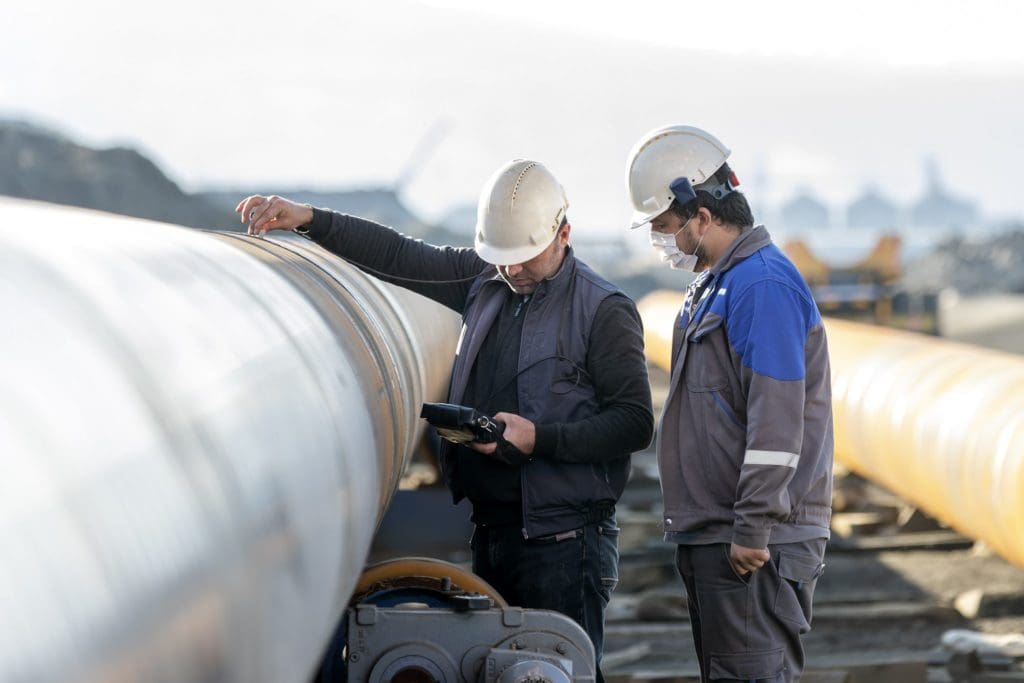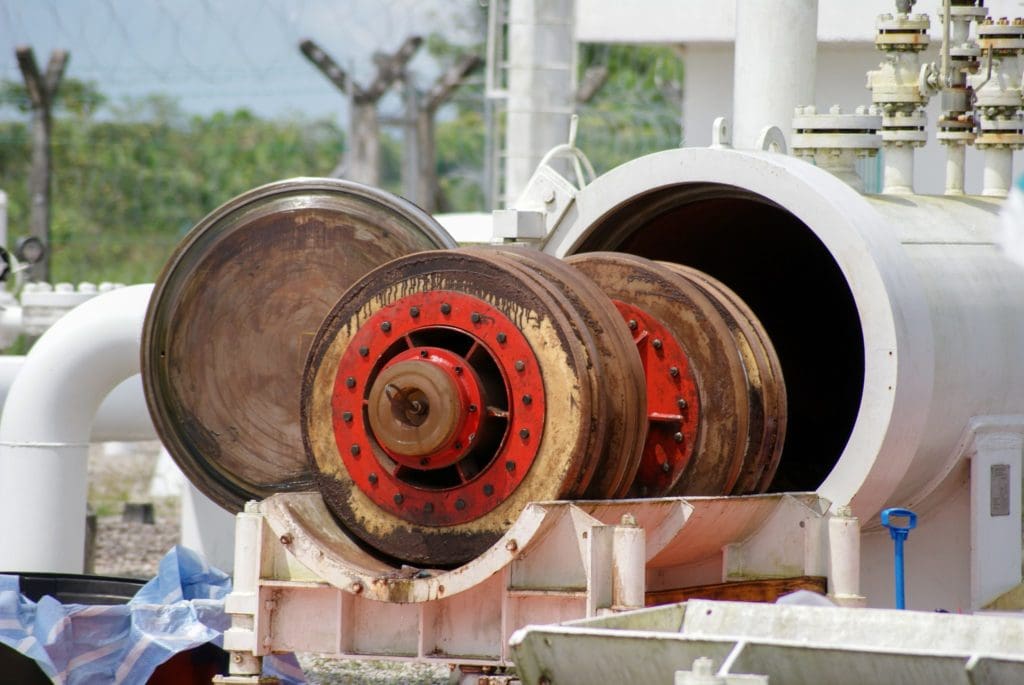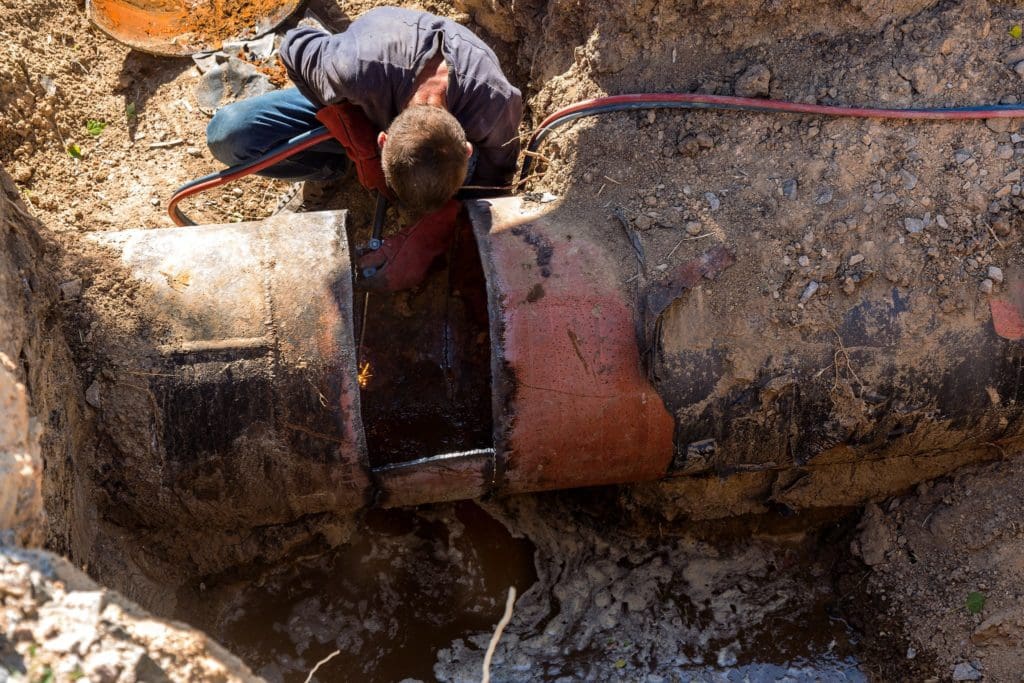5 Steps to Take Against Internal Pipe Corrosion
Did you know that internal pipe corrosion caused 12% of pipeline incidents between 2013-2017? Pipelines are a huge infrastructure investment, and any failure means lost resources.
It is imperative to maintain the physical integrity of pipelines. Regular maintenance will extend their lifespan, reduce environmental hazards, and save on replacement costs. Heartland Repair and Coatings provides solutions that will ensure effective pipeline wear prevention and repair.
What is internal pipe corrosion?
This form of corrosion refers to any corrosion occurring inside of pipe structure.
It’s surprising because we typically think of corrosion as oxidation that occurs when metal is exposed to a harsh outdoor environment, but special conditions can also cause the interior of pipelines to corrode.
High pressure and material contamination lead to internal pipe corrosion.
Although the internal walls of pipelines are protected from the outdoor elements, they experience their own set of stressors. High pressure and constant material flow wear away the internal walls. Without proper maintenance, disaster can strike, and your pipelines can fail.
Material contamination can speed up interior pipe corrosion.
If there are imperfections in the oil or gas, they can aggravate the pipeline’s structure and cause corrosion. Molecules in the oil such as carbon dioxide (CO2), hydrogen sulfide (H2S), water, and organic acids are all considered contaminates.

Why is internal pipe corrosion detrimental?
Internal pipe corrosion is a time-dependent threat.
As time goes on, the corrosion damage worsens. Without early intervention, this type of corrosion will lead to pipeline failure.
Pipeline failure can lead to slow output.
Internal pipeline corrosion causes approximately 60% of corrosion-related failures. As the surface corrodes, material loss leads to “pinhole” leakage, cracks, or splitting of the pipeline material. This breakage results in a reduction of pressure. Damage due to internal corrosion significantly impacts delivery speeds.
Luckily, there are a few methods to monitor and manage internal pipe corrosion.
Here at Heartland Repair and Coatings, we recommend 5 steps to take against internal pipe corrosion.
- Proper material selection & manufacturing processes
- Quality control
- Protective coatings
- Corrosion inhibiting additives
- Line cleaning (to remove water & other contaminants)
Step 1: Proper material selection & manufacturing processes
You need to ensure the pipeline’s quality before you install it.
Imagine how much money and time you could waste if you install a faulty section of pipe. Quality control is your first line of defense to avoid material failure due to manufacturing imperfections.
Manufacturing imperfections increase the likelihood of early-onset internal corrosion.
Uneven surface conditions will harbor corrosive material. Like plaque in an artery, the corrosive material builds up begins to cause problems. Centralized corrosion, known as pitting, will begin to occur inside of your pipeline. Without intervention, the corrosion will continue to spread.

Step 2: Quality Control
On-site fabrication quality checks are imperative to long-lasting pipelines.
Even if the pipe materials and manufacturing are sound, fabrication presents new possibilities for error. Faulty pipeline fabrication leads to failure modes related to excessive stress & improper joining.
Step 3: Protective Coatings
An anti-corrosion coating is your best bet against internal pipe corrosion.
Not only do these coatings help protect your pipe’s internal surface from oxidation, but they also improve the hydraulic flow efficiency by reducing the friction caused by uncoated surfaces.
Cold spray is an innovative protective coating.
Some of the best coating materials to protect oil and gas pipelines are quite new to the market. Cold Spray, an innovation in surface repair and wear prevention, is a high-quality, environmentally friendly solution for corrosion prevention.
There are many possibilities with Cold spray.
Cold spray is a very versatile protective coating. It is extremely durable and the long-term quality of cold spray will help ensure that internal pipe corrosion does not slow you down.
Cold spray particles can be a combination of multiple materials.
You can control the characteristics of your surface coating material with Cold Spray. Particles can be combined and deposited onto your substrate, forming a durable preventative coating suited directly to your needs.
Step 4: Corrosion inhibiting additives
By implementing corrosion inhibiting additives into the oil substrate, you can decrease internal pipe corrosion. As it flows through the pipeline, even a small amount of corrosion inhibitor will make a difference in the wearing process.
These additives can help eliminate corrosion-causing contaminants.
Additives that prevent the formation of foam will assist greatly in the reduction of internal corrosion. Bubbly foam captures air particles and leads to increased friction. Pitting corrosion and oxidation will occur in the areas affected by foamy substrates.

Step 5: Line cleaning
Keeping clear pipeline pathways is key.
Like clogged arteries, clogged pipelines lead to disastrous outcomes. It takes creative solutions to properly clean the inside of pipelines. Luckily, some interesting innovations have already been created.
This “pig” is your pipeline’s best friend.
Cleaning the internal surfaces of your pipelines will make a huge difference in the longevity of your components. There is a device called a “pig” that can be inserted into the pipe. The “pig” is propelled by the internal pressure of the pipeline and moves along with the oil flow.
You can scrub away scale and buildup with a “pig”
They are often outfitted with an abrasive circular mesh brush. With this brush, the pig scrapes away rust, scale, or paraffin wax deposits off the inside of the pipe.

Following these five key steps will help ensure that your pipeline doesn’t succumb to internal pipe corrosion.
Heartland Repair and Coatings is committed to making sure that your assets stay in operating order. If you are interested in learning more about our tried-and-true corrosion prevention methods, give us a shout! The team at HRC is ready to assist you with the latest advancements in surface repair and wear prevention.